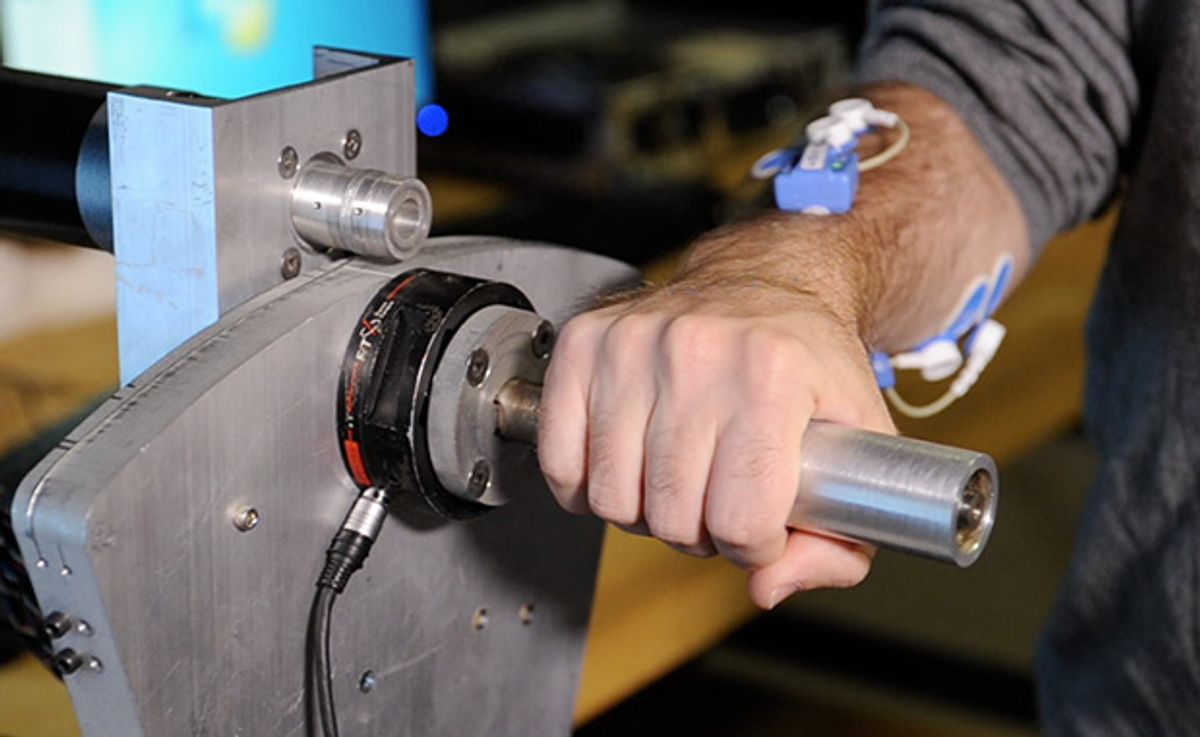Robots, even very well programmed robots, really don't care about you. And by "you," I mean humans. And even if a robot did care about you, most of them don't have a clue about what you're doing or what you want. We've seen all kinds of examples of robots that have been programmed to collaborate with humans, but few so directly as this Georgia Tech robot, thanks to a wearable sensor that lets it "spy" on its human partner.
“It turns into a constant tug of war between the person and the robot,” explains Billy Gallagher, a recent Georgia Tech Ph.D. graduate in robotics who led the project. “Both react to each other’s forces when working together. The problem is that a person’s muscle stiffness is never constant, and a robot doesn’t always know how to correctly react.”For example, as human operators shift the lever forward or backward, the robot recognizes the command and moves appropriately. But when they want to stop the movement and hold the lever in place, people tend to stiffen and contract muscles on both sides of their arms. This creates a high level of co-contraction.“The robot becomes confused. It doesn’t know whether the force is purely another command that should be amplified or ‘bounced’ force due to muscle co-contraction,” said Jun Ueda, Gallagher’s advisor and a professor in the Woodruff School of Mechanical Engineering. “The robot reacts regardless.”
Most other sorts of robotic collaboration involves passive sensors that are designed primarily to keep the robot from accidentally maiming or killing any humans that might come near it. Actually being able to figure out what a human intends to do, as the human intends to do it, has the potential to make collaboration both safer and more effective.
The downside here is that you have to outfit humans with a bunch of complex sensors, but that's starting to get to be much less of a big deal. For example, with something like Thalmic Labs' Myo armband, you might just be able to slip on an accessory with a minimum amount of hassle that accomplishes what Georgia Tech's sensors can.
Via [ Georgia Tech ]
Evan Ackerman is a senior editor at IEEE Spectrum. Since 2007, he has written over 6,000 articles on robotics and technology. He has a degree in Martian geology and is excellent at playing bagpipes.



